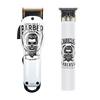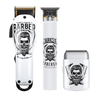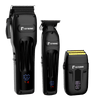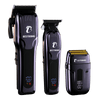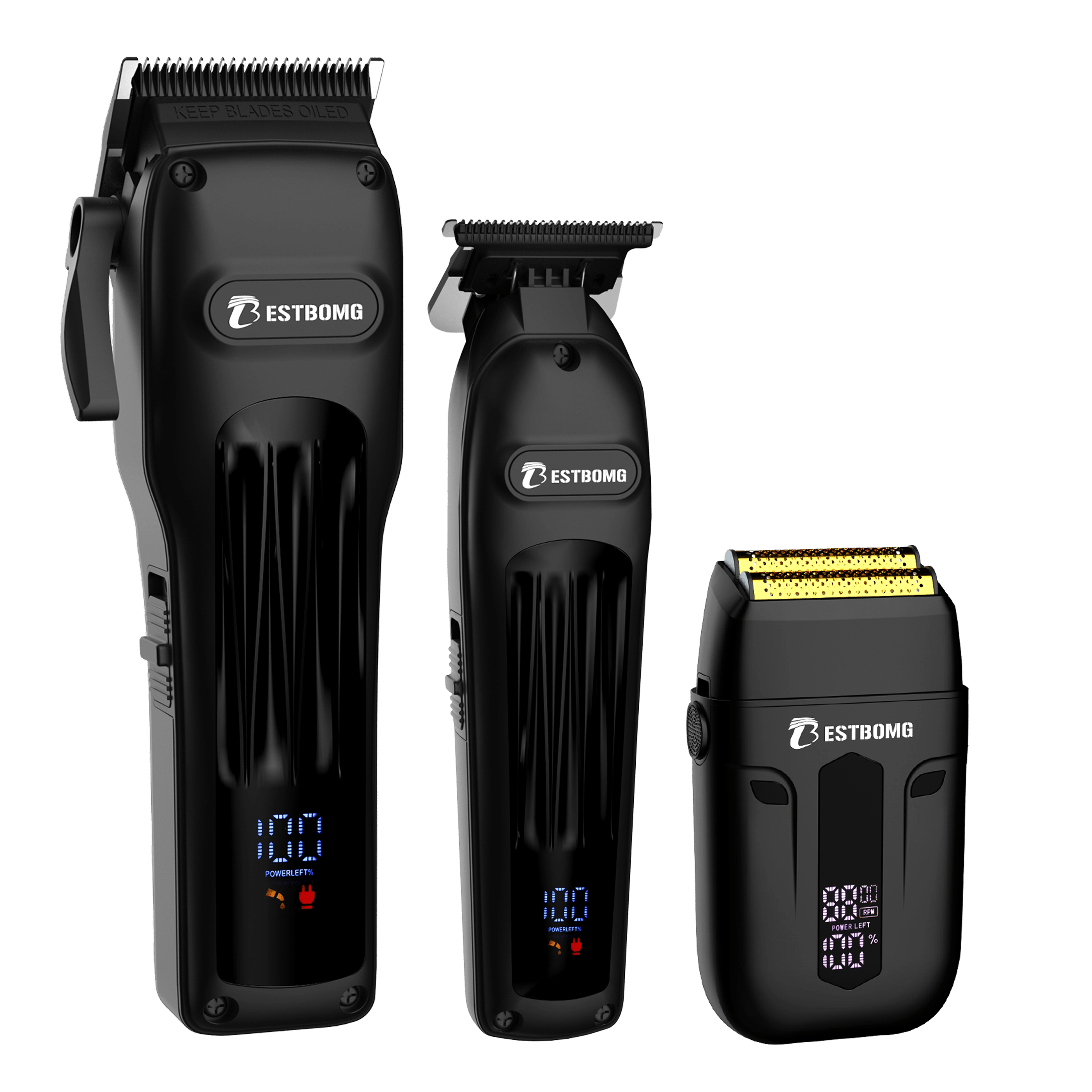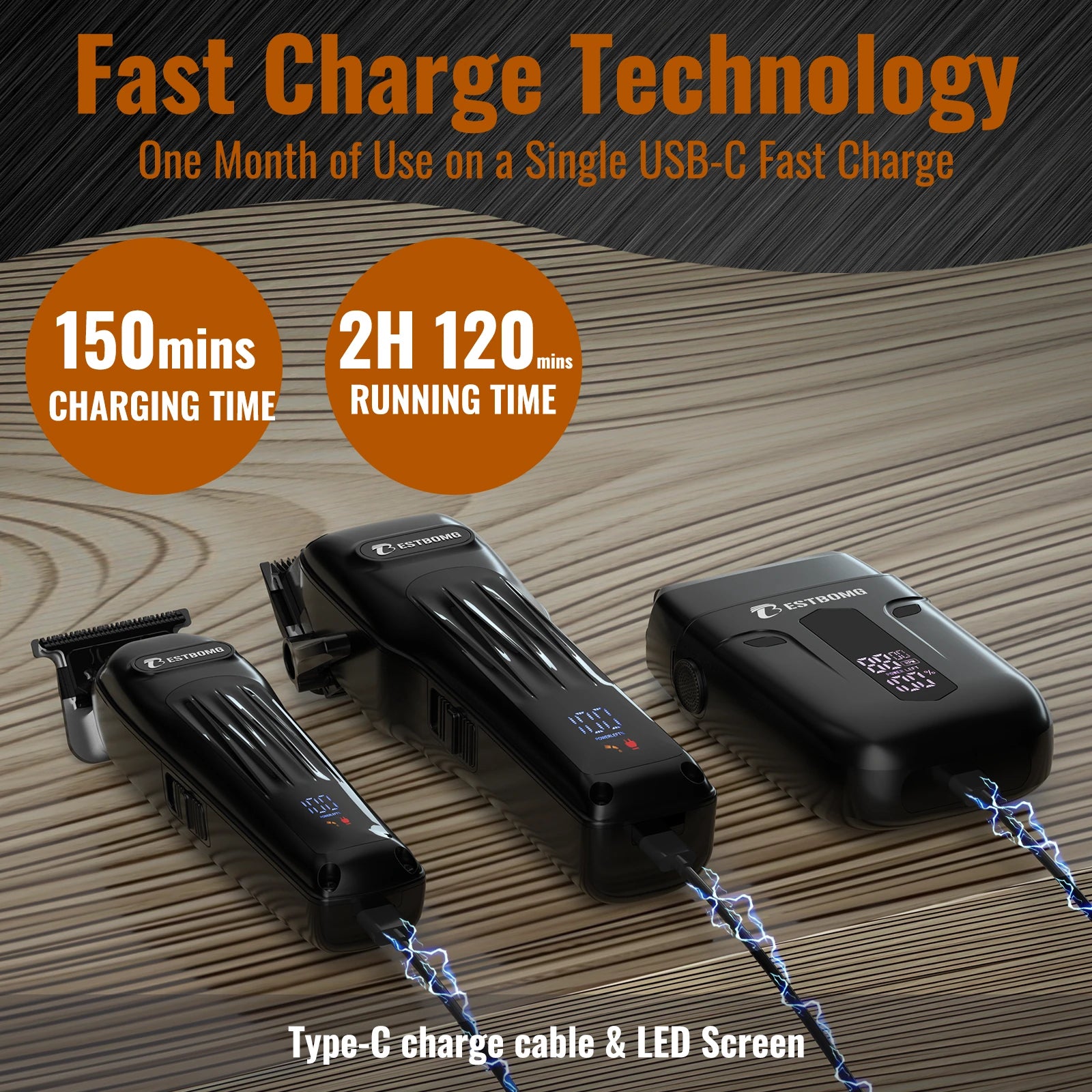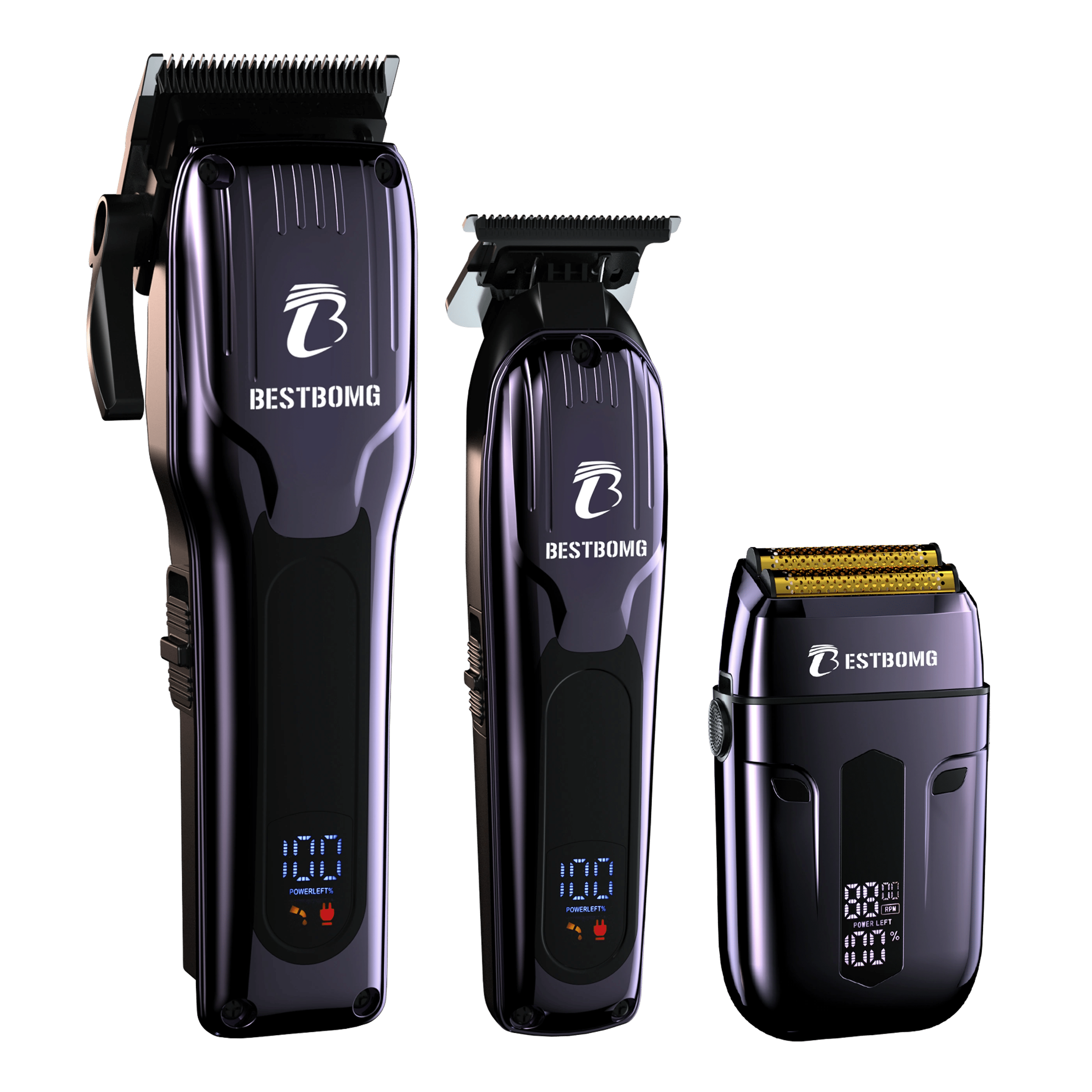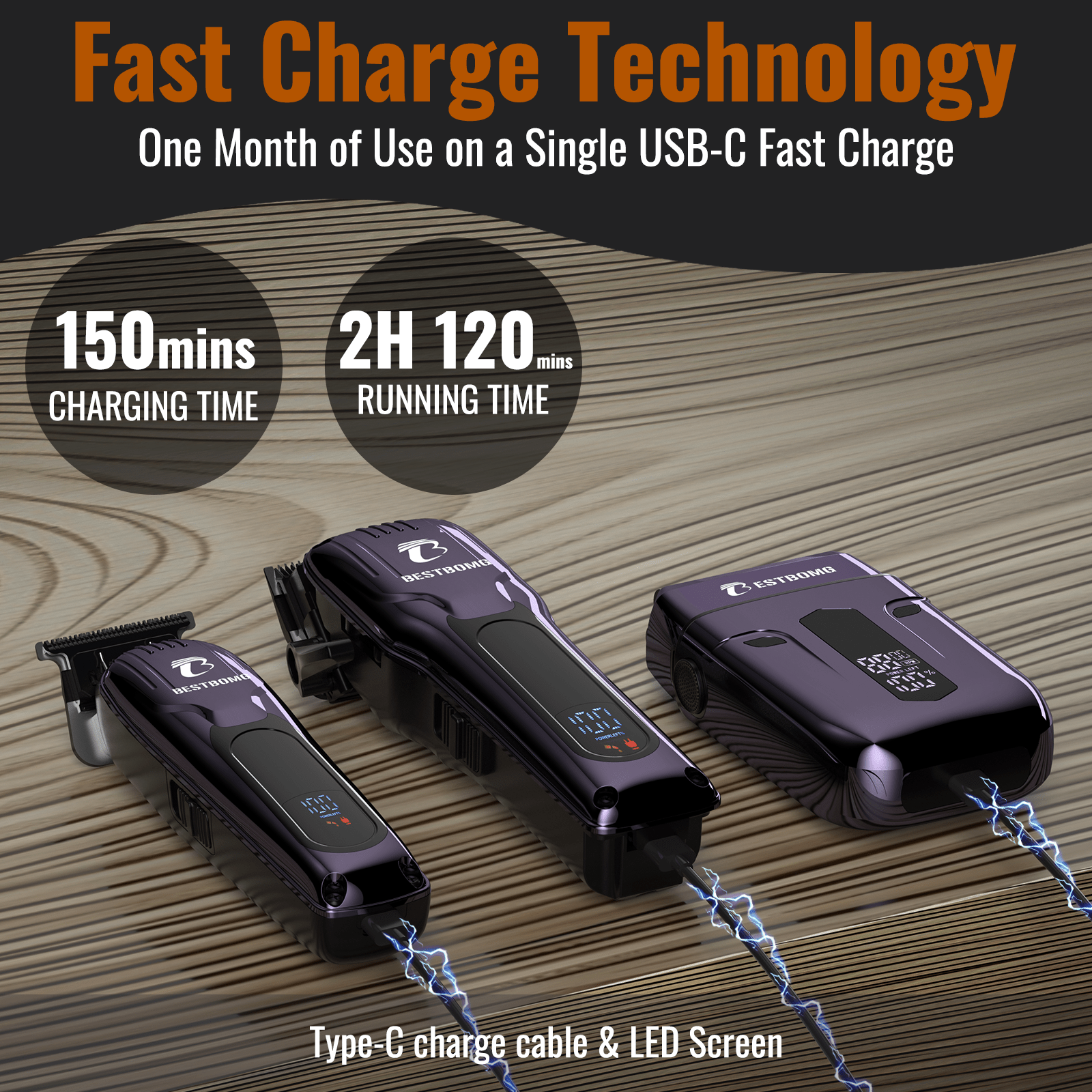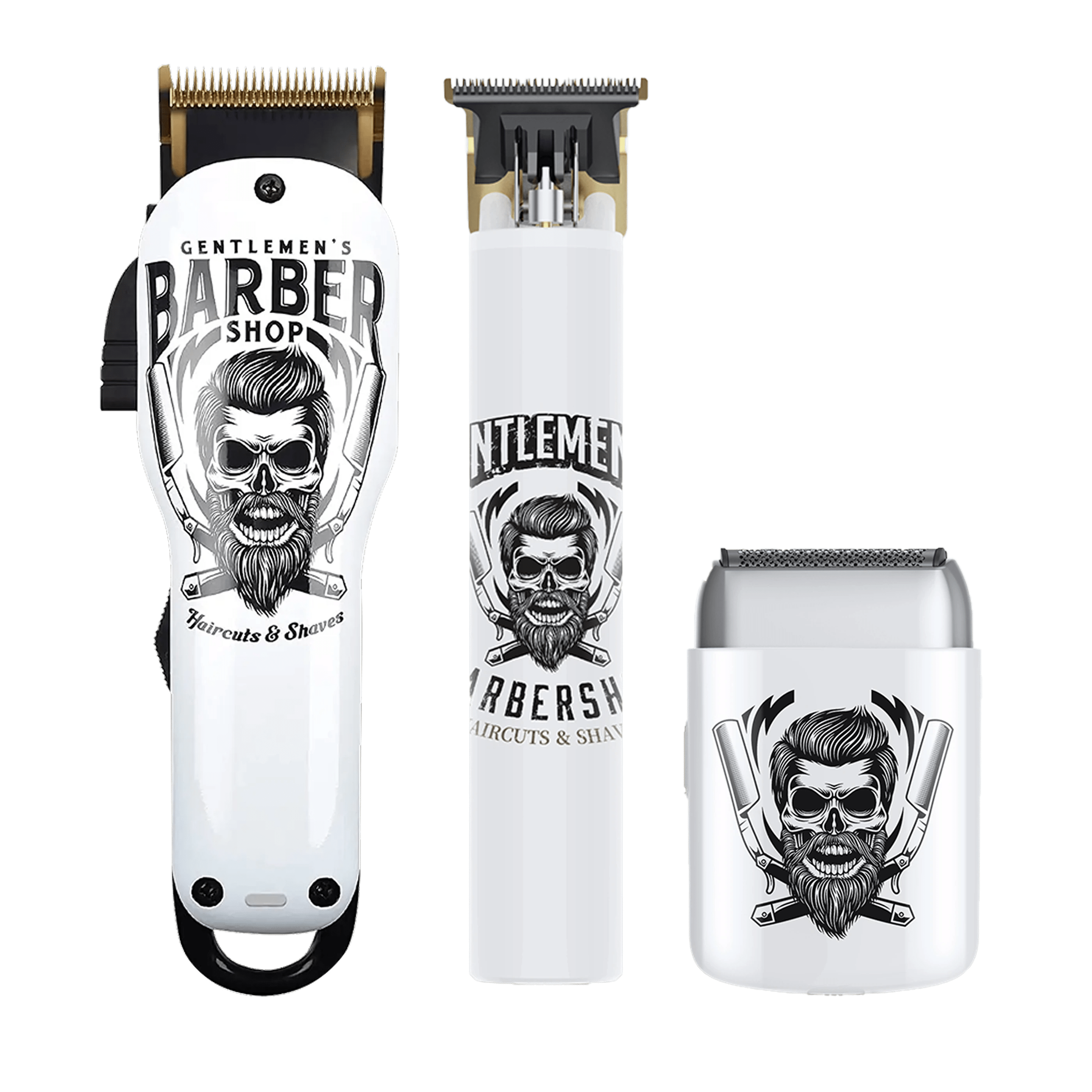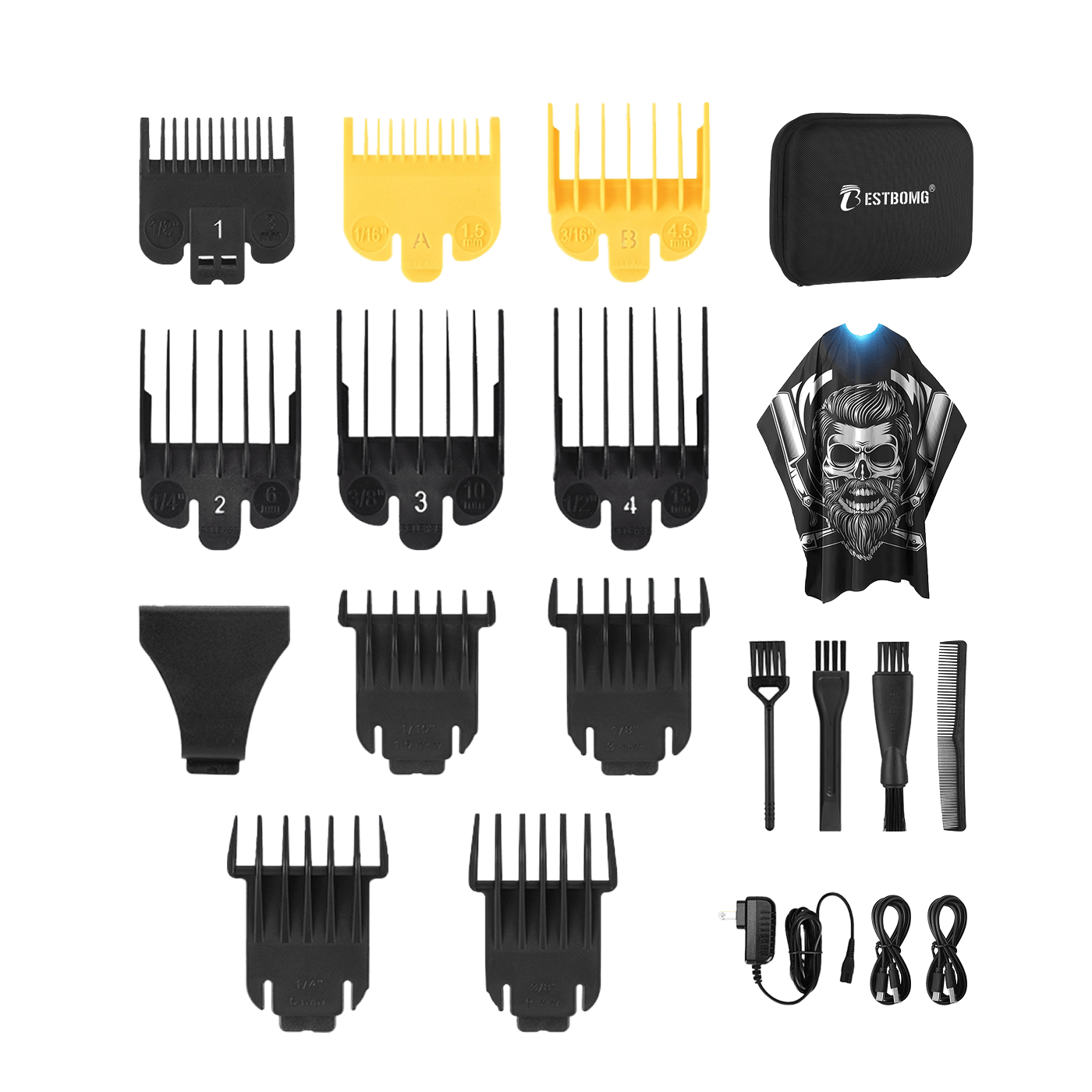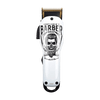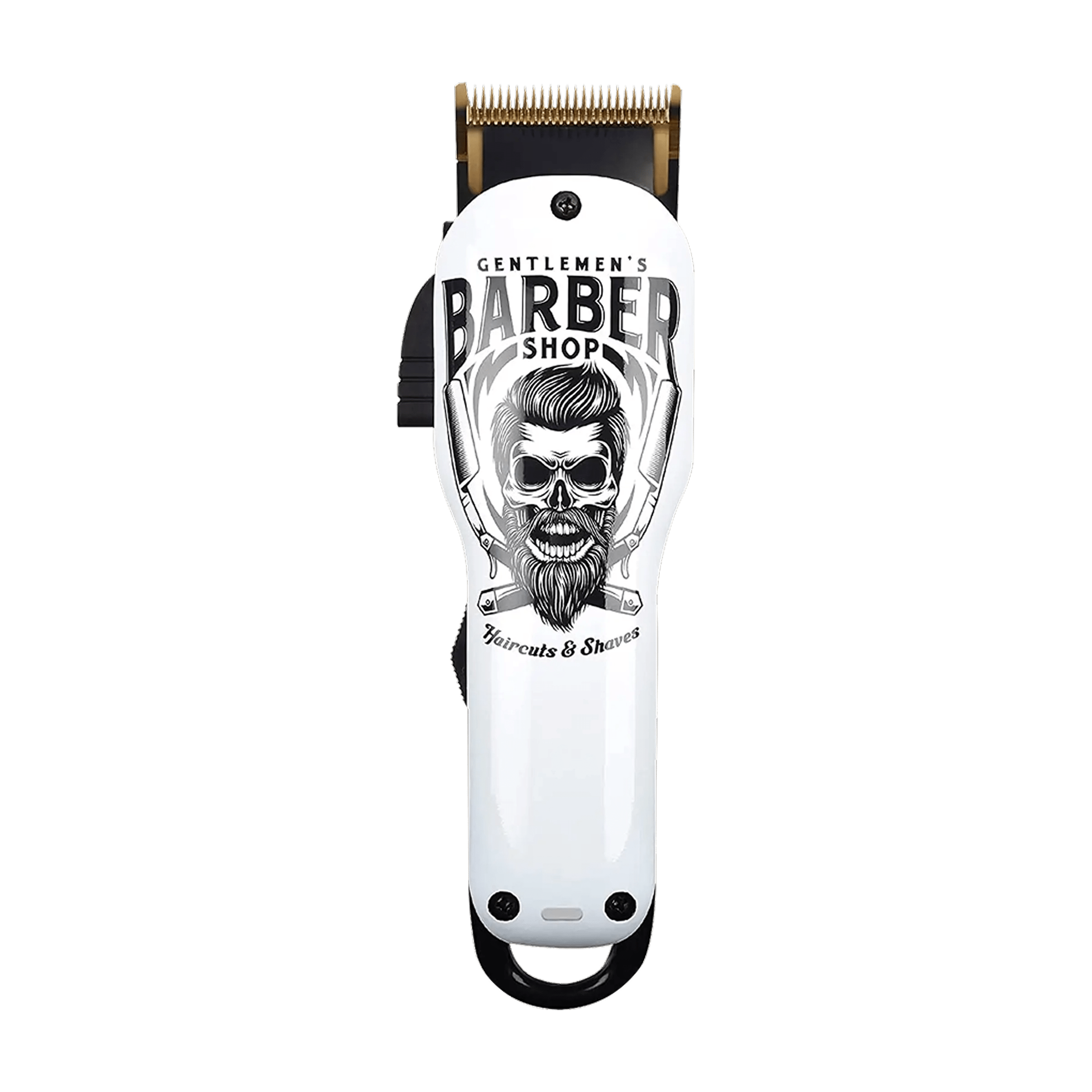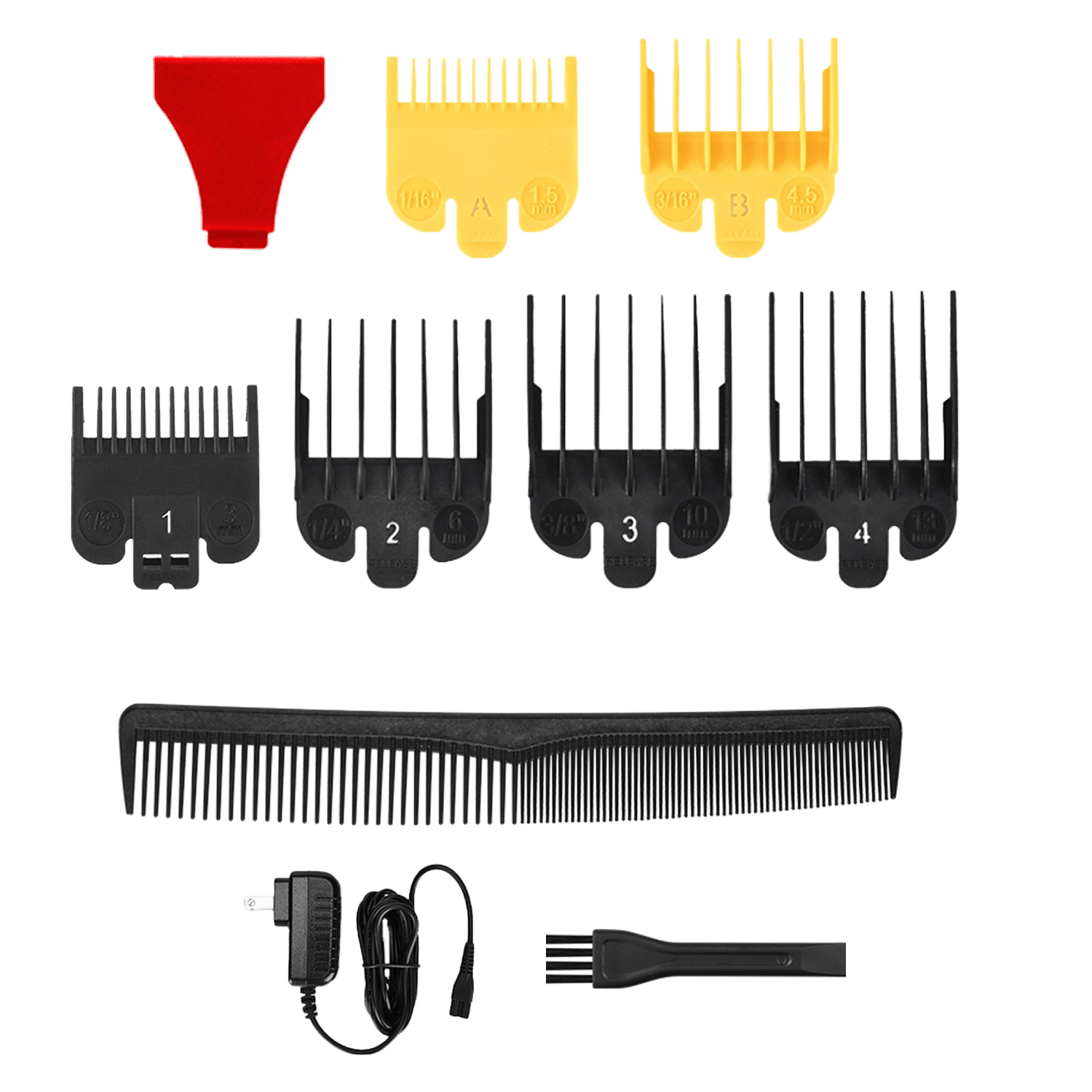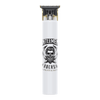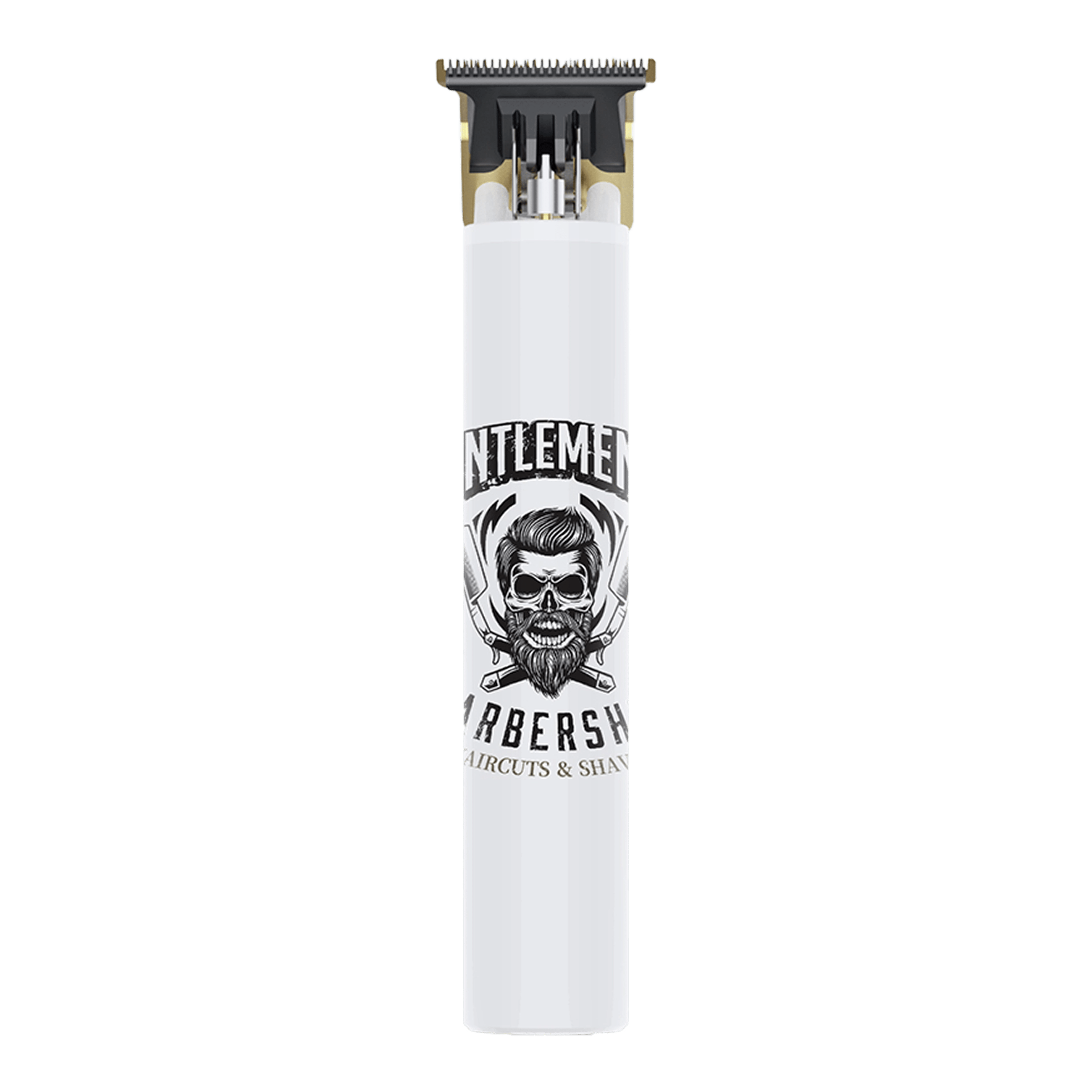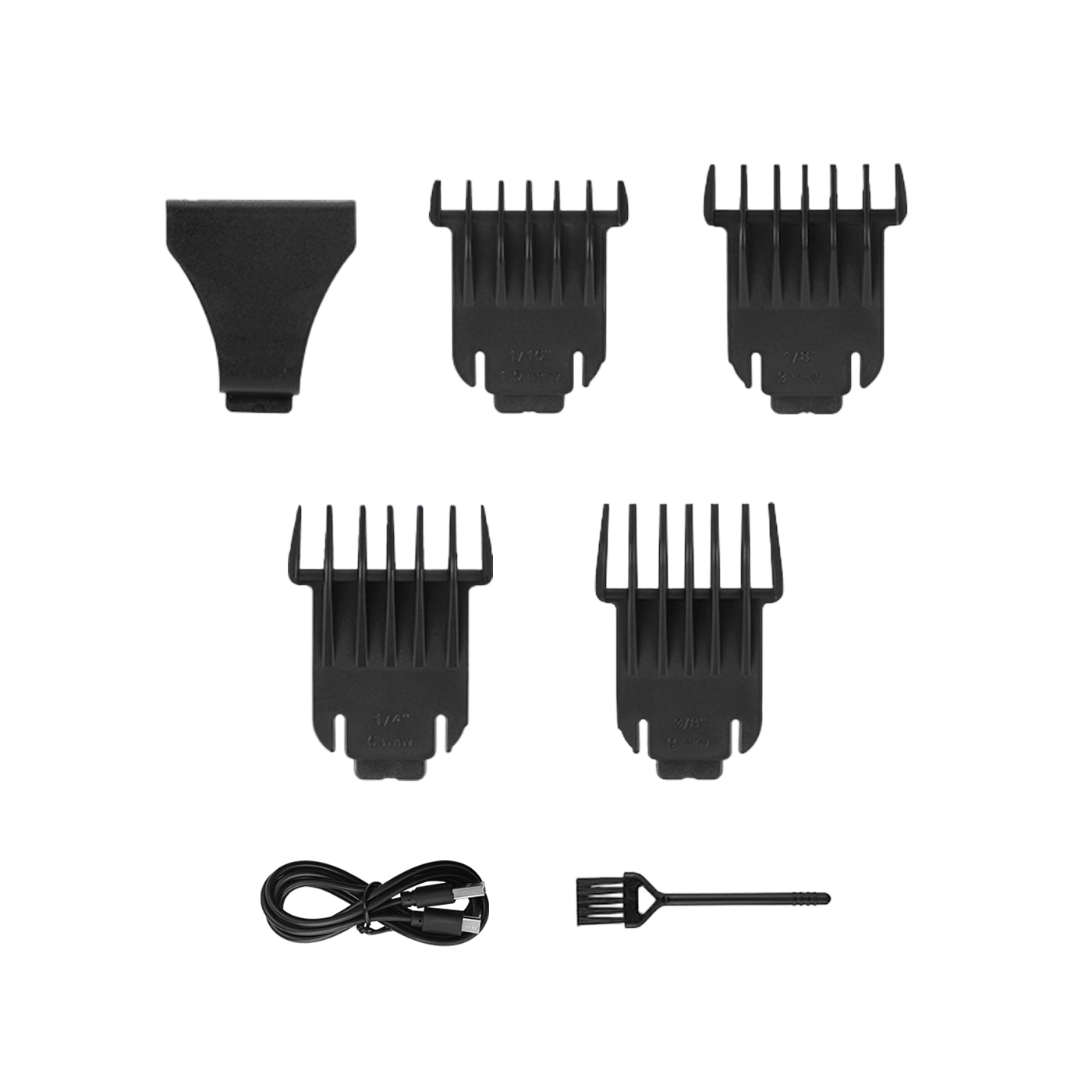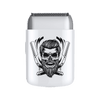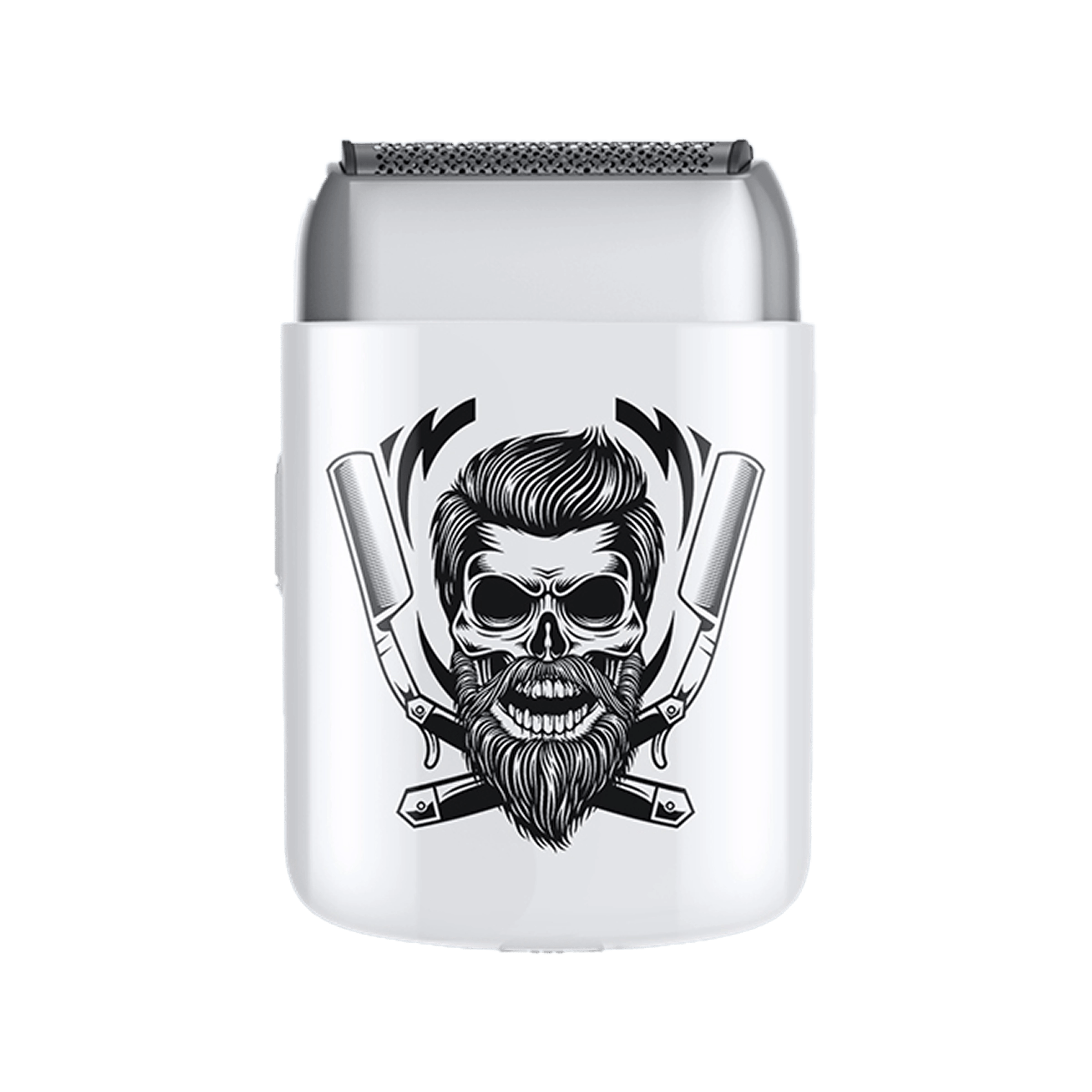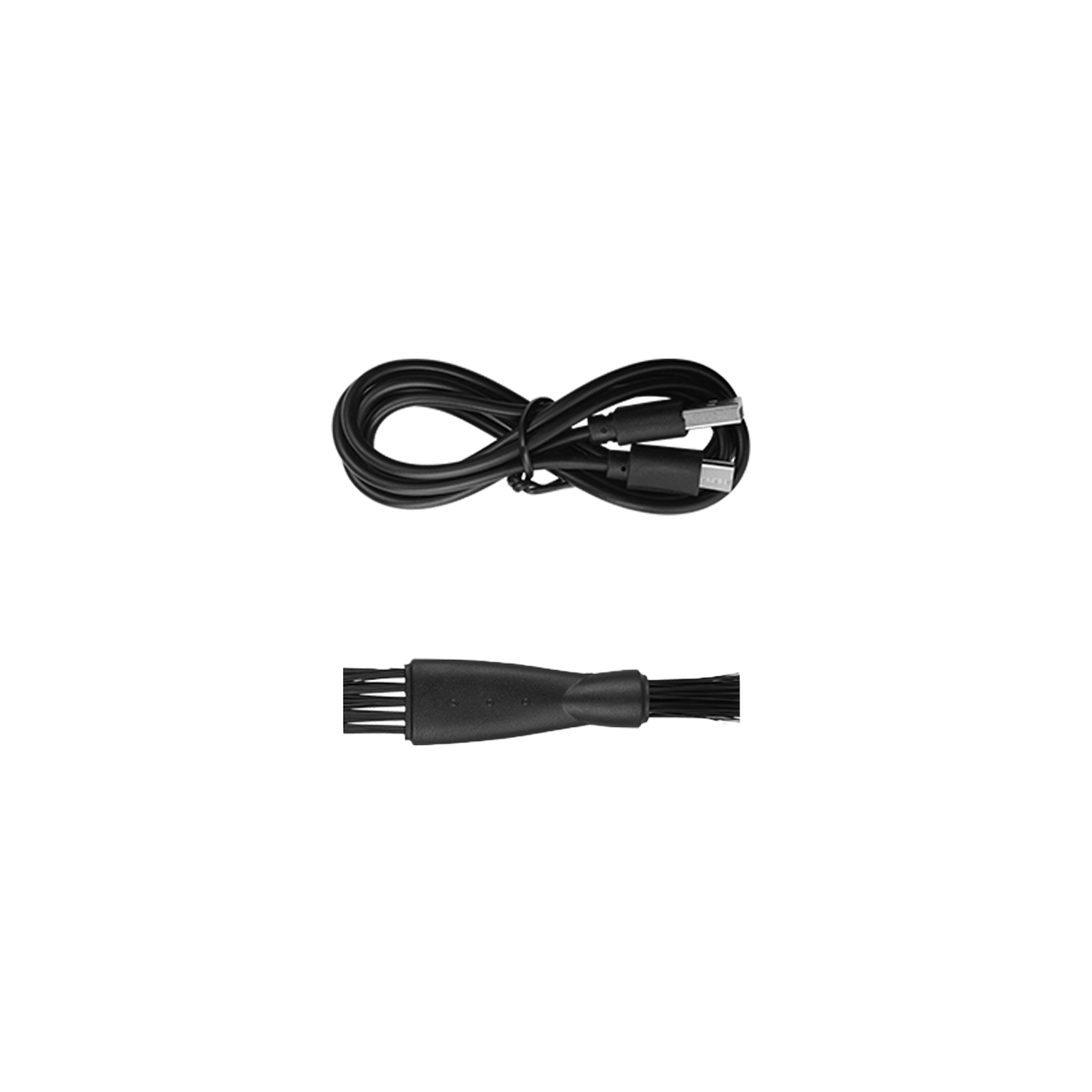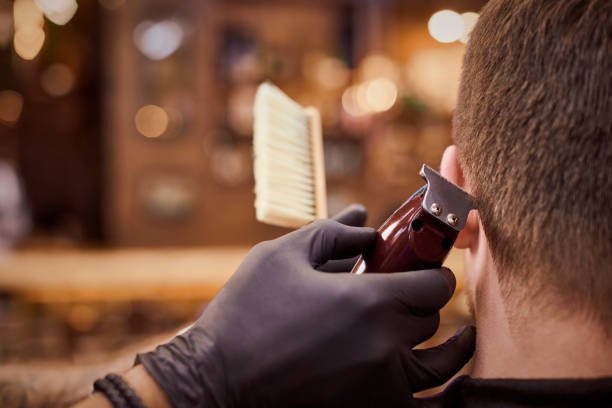Professional barbers primarily use Wahl, Andis, and Oster clippers for their reliability and cutting power. Popular models include Wahl Magic Clip and Senior, Andis Master, and Oster Fast Feed.
Most barbers own multiple clippers—one for bulk cutting, one for fades, and specialized trimmers for detail work. The right clipper depends on your cutting style, budget, and whether you prefer corded or cordless operation.
Why Professional Barbers Use Multiple Clippers
No single clipper does everything perfectly. That's why experienced barbers build a collection of tools.
The typical barber's setup:
- Main clipper: Powerful workhorse for bulk cutting and general work
- Fade clipper: Specialized for smooth, precise fades
- Detail trimmer: For line-ups, edges, and facial hair
- Backup clipper: Spare in case primary fails mid-cut
Why multiple clippers matter: Different clippers excel at different tasks. A powerful clipper cuts through thick hair efficiently but may be too aggressive for fine detail work. A precision fade clipper creates smooth transitions but struggles with bulk removal.
Professional insight: Reddit barbers consistently mention using 2-3 clippers per cut—switching tools based on what the haircut requires at each stage.
Understanding the different types of professional grooming tools helps explain why barbers invest in specialized equipment rather than relying on one all-purpose tool.
Top Clipper Brands Professional Barbers Trust
Three brands dominate professional barbering: Wahl, Andis, and Oster. Each has strengths that appeal to different barbers.

Wahl Lithium Pro Cordless Kit ($87.50)
Best for: Budget-conscious home users who want reliable basics
Honest assessment: This is Wahl's consumer-grade kit, not their professional line. At $87.50, it delivers solid value for occasional home use but won't match the performance of true professional models.
Real strengths:
- 2-hour runtime is genuinely impressive for the price point
- 15-minute quick charge feature actually works well for emergencies
- Self-sharpening blades reduce maintenance hassle
- 5-year warranty shows Wahl stands behind it
Realistic limitations:
- Motor power isn't specified (red flag—likely around 5000-6000 RPM)
- "Suitable for any thickness" is marketing speak; struggles with very thick, coarse hair
- Build quality is plastic, not metal housing
- Not the same performance as Wahl's pro models (Magic Clip, Senior)
Who should buy this: Someone cutting their own hair 1-2 times monthly who wants Wahl reliability without professional pricing. Not ideal for aspiring barbers or high-volume use.

Andis Fade Master® Adjustable Blade Clipper ($119.99 estimated)
Best for: Professional barbers who prefer corded reliability
Honest assessment: This is a legitimate professional tool with Oster's proven magnetic motor technology. The adjustable blade and 8-foot cord make it a workhorse for busy barbershops.
Real strengths:
- Magnetic motor delivers consistent 7200-14000 SPM—this cuts through everything
- Adjustable #000 to #1 blade eliminates need for guard changes during fades
- 8-foot cord actually matters when moving around a client
- Cuts wet or dry hair without bogging down (genuinely rare)
- Made in USA with aluminum housing—built to last decades
Realistic limitations:
- Corded only—no battery backup option
- Heavier than cordless alternatives (22.9 oz)
- Requires outlet access—not portable
- More expensive than consumer models

Oster® Professional™ Craftsman Adjustable Mag Clipper
Best for: Fade specialists who demand ultra-precision
Honest assessment: Wahl's premium fade-focused clipper. The 14,000 SPM and zero-gap capability are real advantages, but you're paying for specialization.
Real strengths:
- 14,000 SPM is among the fastest available—genuinely smoother fades
- Adjustable #00000 to #000 with zero-gap option for ultra-close work
- Aluminum housing means it survives daily drops
- Carbon-steel blades stay sharp longer than standard steel
- Runs cooler and quieter than cheaper magnetic motors
Realistic limitations:
- Corded only—no cordless option
- Specialized for fades; not ideal as your only clipper
- Price reflects specialization—pays premium for fade features
- Overkill if you're not doing detailed fade work regularly
Who should buy this: Barbers whose reputation depends on clean fades. If fades aren't your primary focus, the Oster Craftsman offers more versatility at the same price.
Emerging brands: Gamma+ and BaBylissPRO are gaining popularity with innovative features like magnetic motors and extended battery life.
Quality professional-grade clippers for daily barbering should match the performance standards set by these industry leaders.
Most Popular Clipper Models Used by Barbers
Based on barber forums, professional reviews, and Reddit discussions, these models appear most frequently.
For main cutting work:
Wahl Magic Clip (Cordless) - All-around performer with great battery life, versatile for most cuts. Price: ~$100-130. Solid consumer-to-pro crossover but not quite professional-grade power.
Wahl Senior (Cordless) - More powerful than Magic Clip, cuts through bulk easily. Price: ~$120-150. Genuine professional workhorse trusted by working barbers.
Andis Master (Corded/Cordless) - Legendary for precision, adjustable blade, constant speed technology. Price: ~$140-180. Long-term investment that many barbers use for decades.
For fade work:
Oster Fast Feed - Considered by many as the best fade clipper available. Smooth, consistent cutting. Price: ~$140-160. Has a cult following among fade specialists.
Oster Professional Craftsman (~$119.99) - Magnetic motor delivering 7200-14000 SPM cuts through everything. Adjustable #000 to #1 blade, 8-foot cord, aluminum housing. Made in USA. Built for 15+ years of daily professional use. Heavier (22.9 oz) but worth it for reliability. Best for barbers who value consistent power over portability.
Wahl Fade Master (~$119.99) - Premium fade specialist with 14,000 SPM and zero-gap capability. Adjustable #00000 to #000, carbon-steel blades, aluminum housing. Runs cooler and quieter than standard magnetic motors. Purpose-built for fades—not ideal as your only clipper, but unmatched if fades are your focus.
Wahl Legend - Powerful motor, excellent for tight fades. Price: ~$150-180.
Andis Master - Also excels at fades due to precise blade control. Price: ~$140-180.
For detail work and trimmers:
- Andis T-Outliner: Industry standard for lineups and edges. Often modified with GTX blade. Price: ~$80-110
- Andis Slimline Pro: Lightweight, perfect for detail work and mustaches. Price: ~$90-120
- Wahl Detailer: Wide T-blade, excellent for shape-ups and outlines. Price: ~$60-90
Budget-friendly options that perform: For barbers starting out or on a budget, several options deliver solid value:
Wahl Lithium Pro Cordless Kit (~$87.50): Consumer-grade but reliable for home use. Features 2-hour runtime and 15-minute quick charge. The 5-year warranty shows confidence, but motor specs aren't disclosed (likely 5000-6000 RPM). Best for occasional home cutting, not professional volume. Plastic housing won't survive daily barbershop abuse.
Bestbomg Y4T9 Complete Kit (~$79.99): Complete starter package with clipper, trimmer, and foil shaver. The 6500 RPM motor and 240-minute runtime impress at this price. IPX6 waterproof and stainless steel blades add value. Realistically prosumer-level—adequate for learning but slower than pro models (which run 7200-14000 RPM). Great for beginners wanting multiple tools without $300+ investment, or as backup equipment. View the complete clipper and trimmer kit.
Both offer legitimate value for their intended use cases—just understand you're not getting Wahl Senior or Andis Master performance.
Cordless vs Corded: What Barbers Prefer
The debate continues, and most barbers use both. Each has distinct advantages.
Cordless advantages:
- Freedom of movement without cord interference
- Better for mobile barbering or booth rental
- More comfortable hand positioning
- Modern lithium batteries last 90-120 minutes
Cordless disadvantages:
- Power may decrease as battery drains
- Need to remember to charge
- Typically more expensive
- Battery eventually degrades
Corded advantages:
- Consistent power throughout entire use
- Never worry about battery dying mid-cut
- Usually less expensive
- Last longer overall (no battery to fail)
Corded disadvantages:
- Cord can get in the way
- Less flexibility in positioning
- Not portable for mobile work
Professional consensus: Many barbers use cordless for most work but keep a corded backup. High-volume shops often prefer corded for consistency.
According to grooming industry analysis from professional barbering equipment experts, the trend is moving toward cordless as battery technology improves.
What Makes a Good Professional Clipper
Not all clippers marketed as "professional" actually meet pro standards. Here's what separates real professional tools from consumer-grade clippers.
Essential features:
- Powerful motor: Minimum 7,000 RPM for cutting through all hair types without bogging down
- Sharp, quality blades: High-carbon steel or ceramic, properly aligned from factory
- Adjustable taper lever: Allows fine-tuning between guard sizes for smooth fades
- Durable housing: Metal or reinforced plastic that survives daily drops
- Comfortable weight: Heavy enough to feel substantial, light enough to use all day
Performance indicators:
- Cuts through wet or dry hair without pulling
- Stays cool during extended use (or has cooling features)
- Maintains consistent speed under load
- Runs quietly (important for client comfort)
- Easy to clean and maintain
Longevity factors:
Professional clippers should last 5-10 years with proper maintenance. Check if replacement blades and parts are readily available. Brands with strong professional support networks make repairs and maintenance easier.
Beginner Barber: What Clipper Should You Buy?
Starting out? Don't buy everything at once. Build your collection strategically.
Your first clipper (choose one):
- Wahl Magic Clip: Best all-around starter, versatile, affordable at ~$100-130
- Andis Master: If you can afford it (~$140-180), worth the investment for long-term quality
- Budget option: Quality cordless clipper designed for learning at under $100
Why these work for beginners:
They're versatile enough to handle most haircuts while you're learning. You won't outgrow them quickly—many experienced barbers still use these models daily. Parts and support are readily available if issues arise.
Your first trimmer (essential for finishing):
- Andis T-Outliner: Industry standard, ~$80-110
- Wahl Detailer: Slightly cheaper alternative, ~$60-90
- Budget option: Quality precision trimmer for detail work if budget is tight
What to add later:
Once you're comfortable with basics, add a specialized fade clipper (Oster Fast Feed or similar) and upgrade your trimmer if needed.
Total startup cost:
- Premium path: $300-400 (professional-grade clipper + professional trimmer)
- Budget path: $150-200 (solid starter tools that perform well)
Clipper vs Trimmer: Understanding the Difference
Clippers and trimmers serve different purposes. Using the right tool for each task produces better results.
Hair clippers:
- Designed for cutting and removing length
- Larger blades and more powerful motors
- Work with guard attachments for different lengths
- Used on larger head areas (top, sides, back)
- Essential for creating the main haircut shape
Hair trimmers:
- Designed for detailed and precise grooming
- Smaller, lighter, more maneuverable
- Usually used without guards or with very short guards
- Perfect for edges, lineups, and facial hair
- Create clean, sharp lines
When to use clippers:
- Removing bulk and establishing hair length
- Creating fades and blends on sides/back
- Cutting hair on top (with longer guards)
- Any time you're removing significant length
When to use trimmers:
- Cleaning up neckline and hairline
- Creating sharp edges and outlines
- Detail work around ears
- Beard shaping and mustache trimming
- Finishing touches and refining edges
Why barbers need both: Trying to do detail work with clippers is like using a sledgehammer for finish carpentry. Trimmers give the control and precision necessary for professional-looking edges.
Maintaining Professional Clippers
Proper maintenance extends clipper life from 3-5 years to 10+ years. These habits separate pros from amateurs.
After every use:
- Turn off and unplug/remove from charging
- Brush out all hair with cleaning brush
- Apply 2-3 drops of clipper oil
- Run clipper briefly to distribute oil
- Wipe exterior clean
Weekly (for daily use):
- Remove blades completely
- Deep clean with blade wash or alcohol
- Check blade alignment and adjust if needed
- Inspect cord for damage (corded models)
- Clean and oil blade contact points
Monthly:
- Disassemble and clean inside housing
- Check carbon brushes (if applicable)
- Tighten any loose screws
- Replace blades if dull (or sharpen them)
Warning signs needing attention:
- Pulling or snagging hair (dull blades)
- Unusual noise or vibration (alignment issue)
- Overheating quickly (needs cleaning/oil)
- Loss of power (motor or battery issue)
Learning comprehensive grooming tool maintenance practices prevents expensive repairs and replacements.
Real Barber Recommendations from Reddit
What actual working barbers say they use daily:
One experienced barber reports: "Wahl Cordless Seniors, Wahl Cordless Magic Clip, Oster Fast Feeds. Seniors are powerful and cut through bulk, Magic Clip is great all-around, Fast Feeds are still the best for fades."
Another barber's setup: "Andis Masters, every cut, every day."
For trimmers: "Andis T-Outliner with GTX Blade, Andis Slimline Pro Li. I use Wahl clippers, but when it comes to trimmers, Andis all day."
Common themes:
- Most barbers use 2-3 clippers regularly
- Andis dominates the trimmer market
- Oster Fast Feed has loyal following for fades
- Wahl Senior praised for power and bulk cutting
- Many barbers mix brands based on tool strengths
Budget reality: Many successful barbers started with one mid-range clipper and one trimmer, adding specialized tools as their business grew.
Explore options at Bestbomg's professional barbering headquarters for tools that meet professional standards across all price ranges.
Frequently Asked Questions
Why do barbers use different clippers?
Different clippers excel at different tasks.
A powerful clipper cuts through bulk efficiently but may be too aggressive for precise fade work. Specialized fade clippers create smooth transitions that general-purpose clippers can't match. Trimmers provide detail control that clippers lack. Most barbers use 2-3 tools per haircut, switching based on what the cut requires at each stage.
What clipper should I buy as a beginner barber?
Start with Wahl Magic Clip or Andis Master as your main clipper ($100-180) plus Andis T-Outliner or Wahl Detailer trimmer ($60-110). This combination handles 90% of haircuts while you're learning. Don't buy multiple specialized clippers initially—add those once you've developed your skills and understand what you need most.
What do barbers use the most?
Clippers with guards are used most, followed by trimmers for detail work. The typical professional cut uses: clippers with guards for bulk removal and fades (70% of cutting time), trimmers for edges and lineups (20% of time), and sometimes scissors for top length and texturing (10% of time). Clippers do the heavy lifting in modern barbering.
What is the difference between a hair clipper and a hair trimmer?
Clippers remove length and create the main haircut shape with powerful motors and guard attachments. Trimmers are smaller, lighter tools designed for precise detail work, edges, and facial hair. Clippers cut hair on large areas (top, sides, back), while trimmers refine edges, clean necklines, and create sharp outlines. Both are essential—you can't do quality professional work with just one.
How many haircuts should a barber do a day?
Most barbers do 10-15 haircuts daily, depending on complexity and appointment length. Simple buzz cuts take 15-20 minutes. Complex fades and styles take 45-60 minutes. High-volume shops may see barbers doing 20+ simple cuts daily. Quality matters more than quantity—rushing leads to poor results and unhappy clients. Build speed naturally through practice.
What do barbers wear when cutting hair?
Most barbers wear all-black clothing (black shirt, black pants) to hide hair clippings that inevitably stick. Some wear barber smocks or aprons for protection. Comfortable, closed-toe shoes are essential since you're standing all day. Avoid loose jewelry that can catch on equipment or get in the way during cuts.
Equip your barber station with professional-quality tools. Discover clippers, trimmers, and complete kits at Bestbomg's professional barber supply store featuring reliable performance for beginners and experienced barbers alike.
Read more
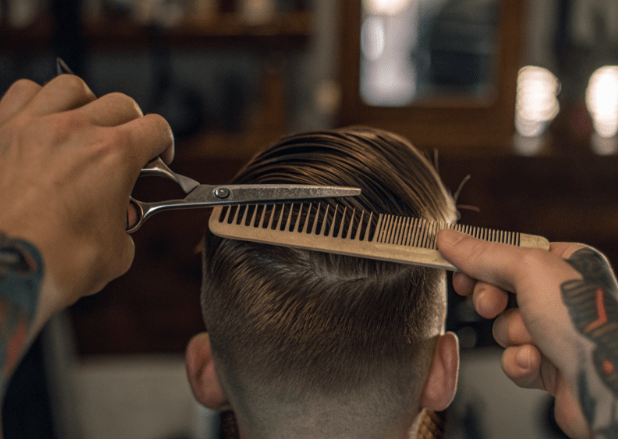
Hair Clippers vs Scissors: Which is Better for Your Haircut?
Neither clippers nor scissors are inherently better—the choice depends on your desired haircut style. Clippers provide quick, uniform cuts ideal for buzz cuts and fades, while scissors offer versat...
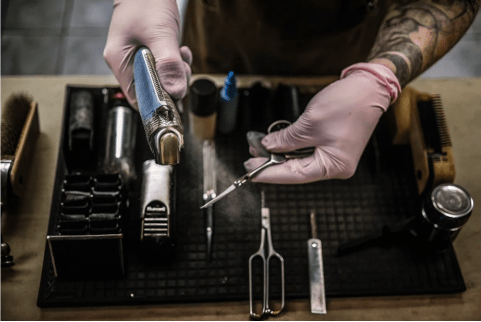
Can You Clean Hair Clippers in Water? Safe Methods & Best Practices
Most hair clippers should never get wet. Water causes rust and breaks the motor fast. Barbers use special cleaning liquids instead. Some newer trimmers can handle water, but you still need to be ca...
